Energy, Art and Sound
A lecture by Douglas Kahn and a listening session with Peter Blamey’s Five Fertile Exchanges
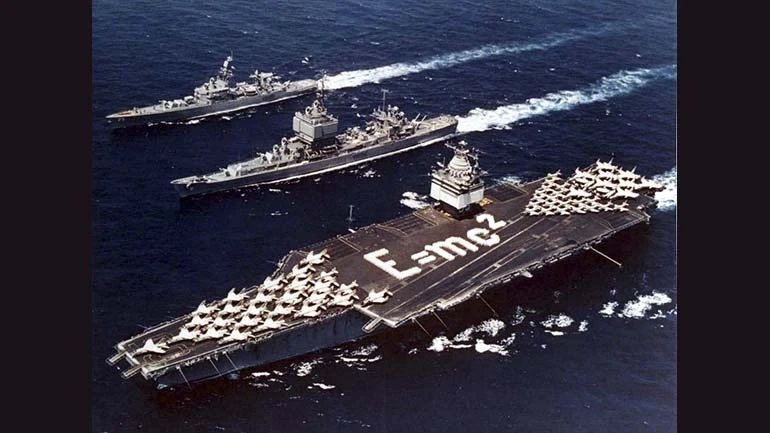
Held on 27 jun 2018
Since 2000, certain universities, chiefly in the English-speaking world, have developed multidisciplinary studies, which include visual studies and others with the generic title Sound Studies. Initially, the specialised historiography in this field analysed the presence of sound and music in the arts, before focusing on vibrational force, broadening its field of analysis to literature, painting and, naturally, music. In the latter, the work of Linda Dalrymple Henderson on early avant-garde artists and Shelley Trower’s work on literature and science in the late nineteenth and early twentieth centuries are both worthy of mention.
Yet most theorists and historians have ignored the role of energy, paying no heed to its presence and influence on much of many artists’ work. This, however, can no longer be disregarded, particularly in art’s reading of the impact of energy produced and transformed by people in the environment, tangible in the pollution of seas and global warming and equally worrying in less visible spectrums such as electromagnetic radiation.
Thus, Douglas Kahn, a pioneer in studies of this ilk, presents his explorations into the relationship between energy, art and sound in the Museo Reina Sofía by way of a lecture accompanied by a listening session centred on Five Fertile Exchanges, by Australian artist Peter Blamey, the subject of a chapter in Kahn’s latest book. The piece was produced in October 2016 in Bogong village in the Victorian Alps in Australia and concentrates a large part of the hydroelectric production of the Kiewa region. Outside this mass production, Blamey’s work explores the responsiveness of certain devices used to extract energy from the natural environment — tiny amplifiers powered with solar panels, basic turbines, etc. – and their ability to grant us different sound experiences through their various reactions with environmental factors.
Curatorship
José Luis Espejo
Complementary material
Kahn, Douglas and Whitehead, Gregory, Wireless Imagination: Sound, Radio and the Avant-Garde, Cambridge, Massachusetts, MIT Press, 1992
Kahn, Douglas, Noise, Water, Meat: A History of Sound in the Arts, Cambridge, Massachusetts; London, MIT Press, 1999Kahn, Douglas, Earth Sound Earth Signal: Energies and Earth Magnitude in the Arts, Berkeley; Los Angeles; London, University of California Press, 2013
Organised by
Museo Reina Sofía
Participants
Douglas Kahn is a professor at the National Institute for Experimental Arts, University of New South Wales, Sydney (Australia). In 1999 he published Noise, Water, Meat: a History of Sound in the Arts, possibly one of the first and best-known histories of sound in art written in English, and in 2013 Earth Sound Earth Signal: Energies and Earth Magnitude in the Arts, an analysis of the use of electromagnetic energy in art, with a sharp focus on Thomas Watson, Henry David Thoreau and Alvin Lucier. Kahn is currently working on Energies in the Arts, expounding the discovery, understanding and evaluation of the potential and the consequences of the presence of energy in art.
Más actividades
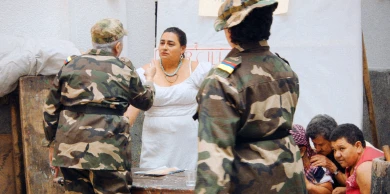
Manuel Correa. The Shape of Now
13 DIC 2025
The Shape of Now is a documentary that explores the challenges and paradoxes of memory, reparation and post-conflict justice, extending a defiant and questioning gaze towards the six-decade armed conflict in which the Colombian State, guerrillas and paramilitary groups clashed to leave millions of victims in the country. The screening is conducted by the Aesthetics of Peace and Desertion Tactics study group and includes a presentation by and discussion with the film’s director, Manuel Correa.
The film surveys the consequences of the peace agreements signed in 2016 between the Colombian State and the FARC guerrilla organisation through the optics of different victims. It was recorded shortly after this signing, a time in which doubts lingered over the country’s future, with many groups speculating in the narration. Correa harnesses the power of images, visual and bodily memory, fiction and re-staging as tools for understanding the conflict, memory and healing, as well as for the achievement of a just peace that acknowledges and remembers all victims.
The activity is framed inside the research propelled by Aesthetics of Peace and Desertion Tactics, a study group developed by the Museo’s Study Directorship and Study Centre. This annual group seeks to rethink, from a theoretical-critical and historical-artistic perspective, the complex framework of concepts and exercises which operate under the notion of pacifism. A term that calls on not only myriad practices ranging from anti-militarism and anti-war movements to activism for non-violence, but also opens topical debates around violence, justice, reparation and desertion.
Framed in this context, the screening seeks to reflect on propositions of transitional and anti-punitive justice, and on an overlapping with artistic and audiovisual practices, particularly in conflicts that have engendered serious human rights violations. In such conflicts, the role played by audiovisual productions encompasses numerous challenges and ethical, aesthetic and political debates, among them those related to the limits of representation, the issue of revictimisation and the risks involved in the artistic commitment to justice. These themes will be addressed in a discussion held after the session.
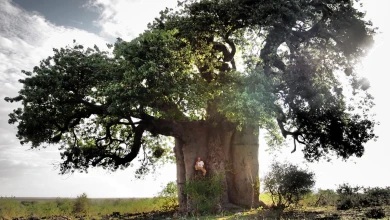
Francisco López and Barbara Ellison
Thursday, 11 December - 8pm
The third session in the series brings together two international reference points in sound art in one evening — two independent performances which converse through their proximity here. Barbara Ellison opens proceedings with a piece centred on the perceptively ambiguous and the ghostly, where voices, sounds and materials become spectral manifestations.
This is followed by Francisco López, an internationally renowned Spanish sound artist, who presents one of his radical immersions in deep listening, with his work an invitation to submerge oneself in sound matter as a transformative experience.
This double session sets forth an encounter between two artists who, from different perspectives, share the same search: to open ears to territories where sound becomes a poetic force and space of resistance.
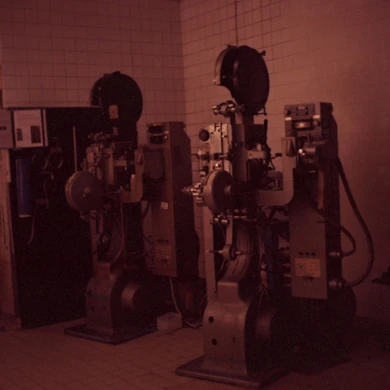
Long Live L’Abo! Celluloid and Activism
4, 5, 6 DIC 2025
The third instalment of Cinema Commons, a research, programming and publishing project which explores how film articulates interpretive communities, fosters collective debate and devises proposals for common spaces, presents L’Abominable, an artist- and film-maker-run independent film-lab founded in 1996 on the outskirts of Paris. The programme is structured around three sessions: a lecture-workshop on L’Abominable, conducted by film-makers Pilar Monsell and Camilo Restrepo; a session of short films in 16mm produced in L’Abominable; and the feature-length film Une île et une nuit (An Island and One Night), made by the Les Pirates des Lentillères collective.
Better known by the shortened version of L’Abo, the artist-run laboratory emerged in response to disappearing infrastructures in artisan film-making and endeavours to offer the creative community a self-managed space in which to produce, develop and screen films in analogue formats such as Super8, 16mm and 35mm. With this underpinning, L’Abo champions the aesthetic and political experimentation of analogue cinema opposite digital hegemony.
L'Abominable, more than a simple work tool, has become a space of artistic and social exchange which has knitted together a community. It is characterised by endowing technique with a poetic dimension, in a community that manufactures its own film devices, and situates pedagogy at its core — the film-makers and artists train one another on common ground. Further, it seeks to forge an opening to all experimental languages around celluloid, for instance installation and film performance, while constituting a place of preservation and conservation in the history of the medium.
L'Abominable is an example of how, at the height of the digital age, artists and film-makers are recovering cinematography and vindicating the production process in its entirety. This autonomy invents alternative routes in the industry as it creates new tools, develops other forms of expression and explores unknown cinematic territories.
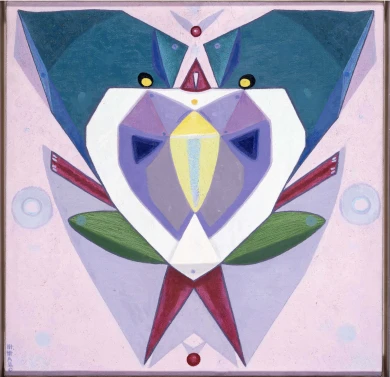
Estrella de Diego Lecture. Holding Your Brain While You Sleep
Wednesday, 3 December 2025 – 7pm
Framed inside the Museo Reina Sofía’s retrospective exhibition devoted to Maruja Mallo, this lecture delivered by Estrella de Diego draws attention to the impact of the artist’s return to Spain after her three-decade exile in Latin America.
Committed to values of progress and renewal in the Second Republic, Mallo was forced into exile to Argentina with the outbreak of the Civil War and would not go back to Spain to settle definitively until 1965 — a return that was, ultimately, a second exile.
Mallo saw out her prolific artistic trajectory with two impactful series: Moradores del vacío (Dwellers of the Void, 1968–1980) and Viajeros del éter (Ether Travelers, 1982), entering her most esoteric period in which she drew inspiration from her “levitational experiences” of crossing the Andes and sailing the Pacific. Her travels, both real and imaginary, became encounters with superhuman dimensions.
In parallel, her public persona gained traction as she became a popular figure and a key representative of the Generation of ‘27 — the other members of which also started returning to Spain.
This lecture is part of the Art and Exile series, which seeks to explore in greater depth one of the defining aspects of Maruja Mallo’s life and work: her experience of exile. An experience which for Mallo was twofold: the time she spent in the Americas and her complex return to Spain.
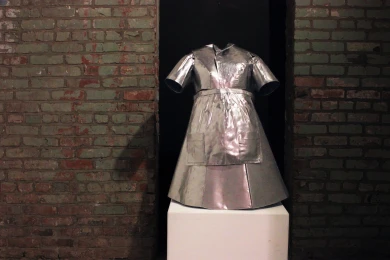
Haunting History
Friday, 28 November 2025 – 6pm
Curator Patricio Majano invites writer Elena Salamanca, artist Beatriz Cortez and artist and writer Olivier Marboeuf to explore, in conversation, the political agency of artistic forms in relation to the spectral resonances in Central America, the Caribbean, and their diasporas.
Central America is a region inhabited by spectres that continually interrupt any attempt at historical closure. Five centuries of colonisation, counterinsurgency wars, genocides, dictatorships and deportations have resulted in accumulated traumas and persistent forms of violence that still move around under the surface of the present. More than past ruins, these spectres are material forces which persist, invade and reclaim the reparation and reconfiguration of the frameworks of historical legibility. In Central American artistic practice, these spectral presences become method, counter-archive and counter-pedagogy.
Taking El Salvador as both axis and prism, this conference seeks to think about “ghostliness”, not as a metaphor but as a political and aesthetic technology, from the following questions: How is that which persists beyond disappearance manifested? Who speaks from amputation? How does memory operate when the State apparatus has systematically searched for its erasure? How is the spectral tapped into as a form of resistance? Which conditions and methods allow art to articulate a claim, reparation and justice when hegemonic narratives are upheld in denial?
Over the course of 2025, these questions have articulated the research residency of Salvadoran curator Patricio Majano in the The Cáder Institute of Central American Art (ICAC) by virtue of the project Amputated Identities: Ghosts in Salvadoran Art. Majano’s research traces genealogies and resonances between Salvadoran contemporary art, the Indigenous genocide of 1932 and the Civil War (1980–1992), interrogating how these unresolved forms of violence operate with artistic subject matter.
Beyond a closing act of the ICAC residency, this encounter stresses exchange and dialogue as method: opening the process and sharing questions, tensions and unresolved challenges — not as conclusions, but as work in progress.
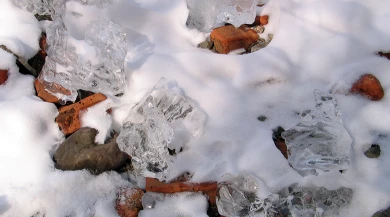
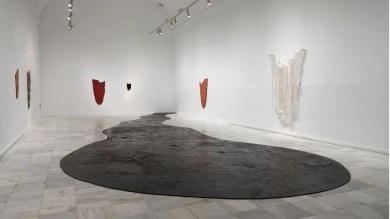
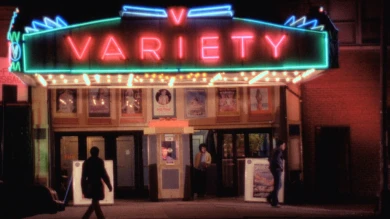
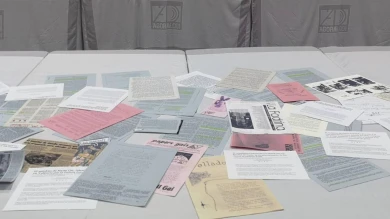
![Miguel Brieva, ilustración de la novela infantil Manuela y los Cakirukos (Reservoir Books, 2022) [izquierda] y Cibeles no conduzcas, 2023 [derecha]. Cortesía del artista](https://recursos.museoreinasofia.es/styles/small_landscape/public/Actividades/ecologias_del_deseo_utopico.jpg.webp)
![Ángel Alonso, Charbon [Carbón], 1964. Museo Reina Sofía](https://recursos.museoreinasofia.es/styles/small_landscape/public/Actividades/perspectivas_ecoambientales.jpg.webp)